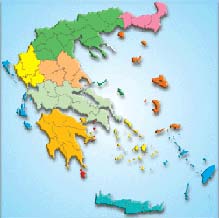
Please click on the map,
the region you want to visit |
|
|
|
|
| |
|
 |
Karytaina |
|
| Karytaina is a picturesque and historic village of Arcadia, which has been designated as preserved. It is located at an altitude of 582 meters, on St. Elias Mountain (or Akriovouni) and is 54 kilometers away from the prefecture's capital, Tripoli and 20 km from Megalopoli.
Administratively, Karytaina is a municipality, which includes sixteen villages and settlements, among them are: Karvounari, Kalyvakia, the Kotylio with the settlements of Strogylo and Palatou, Mavria, Kyparisia of Katsibalis, the Zoni of Kourouniou, the Atsicholos, the Vlachorraftis, the Sarakini with the settlements of Palaiokastro and Kryoneri.
Most Karytaina's houses were built the 19th century and with its cobbled streets will make really wonderful the walks in the village.
Karytaina flourished on Franks' era and its Frankish castle, on the south side of the settlement, was one of the most important fortresses in Peloponnese, in the periods of the Franks, of the Turkish rule and of Revolution of 1821.
During the Turkish occupation, Karytaina was a commercial center with main products the tobacco, silk and wine, while was also an important administrative center until 1830, when its place was taken by Dimitsana, a fact that contributed to its decline.
The Frankish castle is now castled but continues to maintain its prestige and the views to the surrounding area are also wonderful. Its exterior is kept in a good condition, while its interior is completely ruined. |

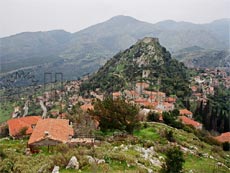 |
 |
Accommodation proposals, entertainment and shopping in Karytaina |
|
The dilapidated two-storey house of the 15th century, in the form of a tower, is built on a hill above the village and has a ceramic decoration on the north side and is an example of houses of Byzantine settlement of Karytaina.
One of the most important buildings of the village is the church of Zoodohos Pigi, located in the central square. It was built in the 16th century to replace the former of the 14th century.
The three-storey bell tower with Frankish characteristics is a part of the original church, dating back to the second half of the 14th century. It is considered to be one of the most important in Greece.
In the region of Karytaina there are several important churches of which the church of St. Nicholas is distinguished, built in the 17th century, in the northwest of the village and below Zoodochos Pigi. It is a domed basilica of a four-columned type. The lintel of the south window bears an engraved inscription, dated in 1831. In its interior, a big part of very interesting frescoes is preserved.
At the top of the south side of the hill is the "Virgin Mary in the Castle" or "church of Kolokotronis" with remarkable marble capitals, decorated according to Byzantine tradition.
At the entrance of the village, there is a vaulted source with a pitched roof and an inscription bearing the date of 1922. It is 200 meters outside and north of the village.
Nearby is Alpheus River, which dominates with its old five-arched bridge, length of 50m. It has Frankish characteristics and on its west side there is a small two-niche Byzantine church, dedicated to the Nativity of Virgin.
The bridge is on the road that connected the Castle of Karytaina to Messinia during the Middle Ages. It was built by the Franks in the 13th century and was renovated in 1439 -1440 at the expense of Manuel Raul Meliki, as mentioned on its inscription.
The beautiful nature surrounding Karytaina is a key feature of wildlife. Significant post has the impressive gorge created by the Alpheus River and Lusios River. Also, impressive is the old stone bridge of Atsicholos at Lusios, near the junction with Alpheus.
Beneath the settlement, there are levels with olive trees, samples of crops that once were spread over a large area around it. Nowadays, the oldest fields are besieged by oaks, maples, fylikia, gavri and koutsoupies.
Characteristic of the region are also the "vrachotsompanaki", small birds that are closely associated with the rocks.
In the past, in Karytaina, fourteen water mills were in function and a fulling mill, facilities from which have survived only a mill, a very old one and opposite there are ruins of another.
Alternative Tourism
In Lousios River, activities of rafting and kayak organized by companies of alternative tourism, gather many friends of the sport. One track for rafting begins from Lousios River and ends at the bridge of Cuckos of Alpheus, a route of 7 km, while a second begins from the same bridge and ends at Matesi of Ilia, a 14 km route.
Events
During the celebration of 15th of August, special color is given by the market that is organized by a local women's association with weaving, needlework and other traditional art, which keeps a shop in the village for the sale of the items.
Visit
Within walking distance from Karytaina you can visit some beautiful traditional villages such as Elliniko, Stemnitsa with its Folklore Museum, Atsicholo and Vlachorraftis, as even the Ancient Gortyna, where are the famous ancient Baths of Asklepios next to the Sanctuary River, the
Lousios's Gorge and the monastery of Kalami.
Visit the locations that are suitable for rafting and kayaking, the traditional bridge of Karytaina - Atsicholou and the beautiful and scenic Andritsaina.
|
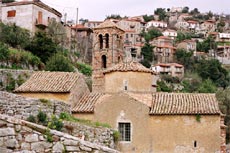
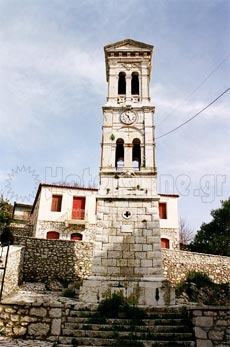
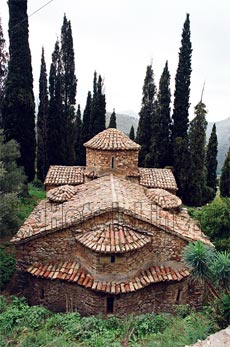
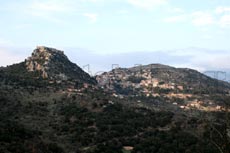
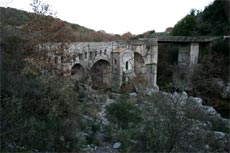 |
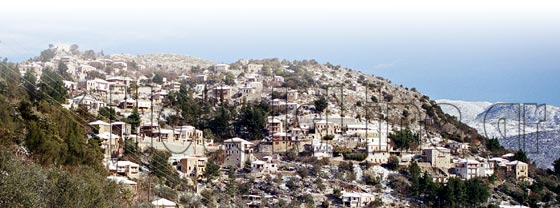
| Photographs: |
Nikos Papadopoulos |
|
|